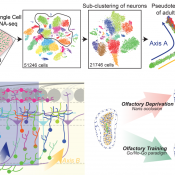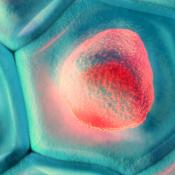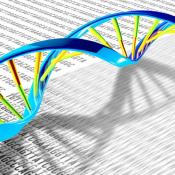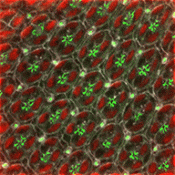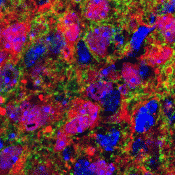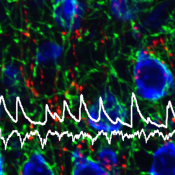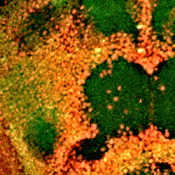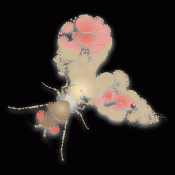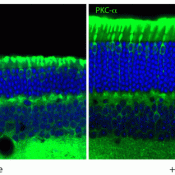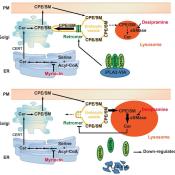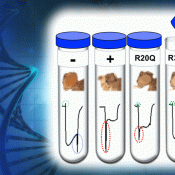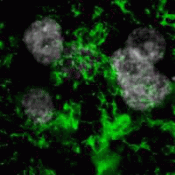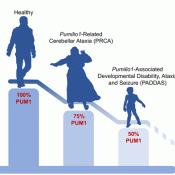Research Breakthroughs
Understanding formation of neurons in adult brains
12/10/18A team of researchers at Baylor College of Medicine, the Texas Heart Institute and Texas Children’s Hospital has developed a powerful new approach to understand the formation of new neurons in the mammalian adult brain.
Loss of SYNGAP1 function results in abnormalities in sensory processing
11/19/18In a study published in Nature Neuroscience, a co-author, Dr. Jimmy L. Holder Jr., neurologist and director of the new SYNGAP1 Center of Excellence at Texas Children’s Hospital, investigator at the Jan and Dan Duncan Neurological Research Institute at Texas Children’s and assistant professor at Baylor College of Medicine, analyzed retrospective clinical data of SYNGAP1 patients from a registry maintained by Bridge the Gap – SYNGAP1 Education and Research Foundation. This study shows how loss of a copy of the SYNGAP1 gene causes abnormalities in how sensory (tactile or touch) information is processed in mice and humans.
Research reveals defective transport of lysosomal enzymes causes a type of Batten disease
11/7/18A recent study from Dr. Marco Sardiello's lab shows defective lysosomal biogenesis as the underlying cause of Neuronal Ceroid Lipofuscinoses 8 (NCL8).
Researchers find a potential new approach to control cancer growth
10/19/18Researchers in Sardiello lab find Src regulates mTORC1, both of which are known to be hyperacive in cancer. This study offers the possibility to develop novel approaches to control cancer growth.
Undiagnosed Diseases Network finds 31 new syndromes
10/11/18A study in the New England Journal of Medicine reports the Undiagnosed Diseases Network has identified 31 new syndromes and found diagnoses for 132 patients within two years of its inception.
Research reveals a novel link between congenital cataracts and dynamin-binding protein
10/4/18Cataract, a condition in which the eye’s natural lens get clouded, is the most common cause of vision loss in older people and can be corrected by routine surgery. But congenital cataract, which occurs in infants and children, is particularly serious since it can inhibit visual development leading to permanent vision loss or impairment, which cannot be entirely reversed with cataract surgery. A new study from Dr. Hugo Bellen's lab has now found compelling evidence that links dynamin-binding protein (DNMBP) to congenital bilateral cataract and severe vision loss.
Long genes are not preferentially altered in Rett and MeCP2 duplication syndromes
9/7/18Dr. Zhandong Liu's team finds long genes are not preferentially misregulated in Rett and MeCP2 duplication syndromes.
Two neuronal lineages in the hindbrain act together to ‘jumpstart’ rhythmic breathing at birth
8/28/18Zoghbi lab has found two neuronal lineages in the hindbrain that coordinate and relay changes in oxygen and carbondioxide levels to the rhythmogenic neurons in the central respiratory circuit to establish and maintain optimal breathing rhythms, which are especially critical for the survival of a newborn.
Xue lab develops a better optogenetic tool to study neuronal function
8/20/18Xue lab develops a better optogenetic tool to study neurons.
Fruit flies help uncover a role for IRF2BPL in a new rare neurological disorder
7/27/18The UDN team reports spontaneously arising mutations in a single copy of the IRF2BPL gene are associated with a previously undiagnosed neurological disorder in seven unrelated individuals.
A new integrative approach finds viable therapeutic targets for Huntington's disease
6/21/18A team of scientists led by Dr. Juan Botas, professor at Baylor College of Medicine and investigator at the Jan and Dan Duncan Neurological Research Institute have developed a way to sort through the thousands of genetic alterations that accumulate in human brains affected by neurological disease.
A simple sugar delays neurodegeneration in lysosomal storage disorders
6/19/18A new study from the laboratory of Dr. Marco Sardiello, assistant professor in Baylor College of Medicine and investigator at the Jan and Dan Duncan Neurological Research Institute at Texas Children’s Hospital, has found oral administration of trehalose, a simple sugar, can resolve the neurological symptoms associated with the deficiency of a lysosomal enzyme.
Ceramides may play a role in early-onset Parkinson’s disease
6/18/18The researchers in the laboratory of Dr. Hugo Bellen, professor at Baylor College of Medicine and an investigator at the Howard Hughes Medical Institute and at the Jan and Dan Duncan Neurological Research Institute at Texas Children’s Hospital, have found ceramides, a family of lipid molecules found within cell membranes, play an important role in an early-onset form of Parkinson’s disease. The study was published in the journal Cell Metabolism.
Tau aggregates activate “jumping genes” in Alzheimer’s disease
6/8/18A recent study published in Cell Reports has found a novel mechanism by which Tau protein aggregates might contribute to neurodegeneration.
Fruit fly study links TBX2 to a novel Mendelian disorder
5/23/18An interdisciplinary team has found a link between TBX2, a member of the T-box family of transcription factors, to a novel disorder that mainly affects the cardiac, skeletal, immune and endocrine systems.
Fruit fly study identifies a new link to aortic aneurysms
4/25/18Ari-1 is linked to human aortic anueurysms.
“CRIMIC”: A versatile genetic tool to accelerate biomedical discovery
3/30/18The Bellen lab has generated large library of versatile CRIMIC fly stocks.
Sardiello lab develops a new tool to speed up biomedical discovery
3/12/18Dr. Marco Sardiello's lab develops a new web tool called Aminode.
Research reveals mechanism that drives ataxia type 1
3/9/18Disrupting Ataxin1-capicua complex alleviates SCA1 symptoms
Changes in Pumilio1 levels linked to distinct neurological disorders
2/22/18Changes in PUM1 levels cause two distinct neurological syndromes
